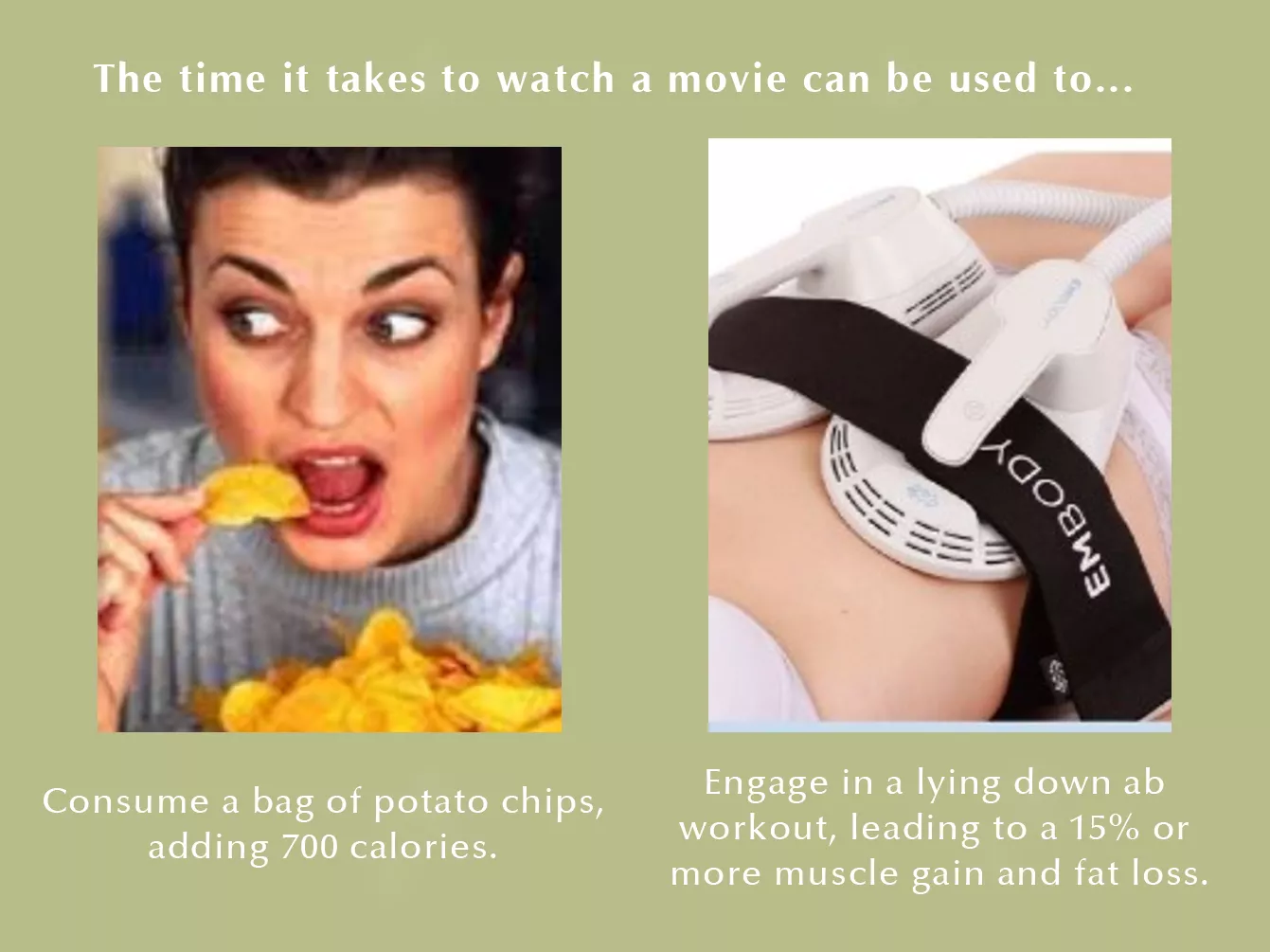
Performing over20,000extreme muscle contractions and injecting90%ultra-pure oxygen efficiency enhancement.
That's more impressive!

HIFEM, a patented technology, can induce muscles to undergo extreme contractions. When muscles are in a state of extreme contraction, it promotes deep internal structural rebuilding of core muscles to adapt to this extreme state.

After rapid muscle contractions, further increase oxygen-carrying capacity in the blood!
A comprehensive treatment that creates a synergistic effect where 1+1>2 for muscle building and fat reduction!






FAQ
Q:Is the treatment painful? What does it feel like, and how long does it take?
A:There will be a sensation of muscle contractions and pulling during the treatment, but it won't feel hot, sharp, or painful. However, some people may experience soreness due to the accumulation of lactic acid from continuous muscle movement after the treatment. This discomfort typically subsides in about 2-3 days.
Q:How long does each treatment session take?
A:Each treatment session lasts 30 minutes, and it is recommended to have two sessions per week for a total of 6-8 sessions.
Q:How soon can you see the results of the treatment?
A:You can expect to see noticeable treatment results after completing 4-8 sessions, which is usually within 2-6 weeks.
Q:How long can the effects of the treatment last?
A:The effects of the treatment commonly last for about 6-12 months. However, if combined with regular exercise and a balanced diet, the results can be more long-lasting and pronounced.
Q:Can individuals with thicker subcutaneous fat use this treatment?
A:While clinical evidence shows that HIFEM's patented technology can penetrate to deeper layers, it is still recommended to perform the treatment within a subcutaneous fat range of 0.5-3 centimeters for the best results.
Q:How long should one wait after abdominal surgery before undergoing the treatment?
A:It is advisable to discuss and receive the treatment with a professional medical team at least 6 weeks after surgery, without experiencing any discomfort.
Q:Is there a need for a specific diet or lifestyle change after the treatment?
A:It is recommended to maintain a regular lifestyle and diet after the treatment, along with moderate protein supplementation.
Q:Can patients with diabetes, liver disease, or metabolic abnormalities receive the treatment?
A:Patients with stable disease control can undergo the treatment. However, individuals with these conditions may have a relatively lower metabolic mechanism, which could impact the treatment's effectiveness. It's important to discuss and evaluate with the medical team before treatment.
Q:Are patients with muscle atrophy suitable for this treatment?
A:The causes of muscle atrophy are numerous, and it can be broadly categorized as primary (no specific cause other than aging) and secondary (due to reduced activity, illness, or malnutrition). Currently, there is no literature regarding the treatment's effectiveness in patients with muscle atrophy. In cases of congenital conditions leading to muscle atrophy, the treatment's effectiveness is limited. It is crucial to discuss and assess with the medical team before treatment.
Q:Other contraindications
A:Individuals with pacemakers, implanted defibrillators, implanted neurostimulators, electronic implants, pulmonary insufficiency, metal implants, drug pumps, applications in the head or heart regions, malignancies, edema, infection or inflammation in the area, or rashes should not use this treatment. It is also not suitable for those with a fever, during pregnancy, or individuals with latex sensitivity or allergies. Exercise caution when dealing with patients with venous inflammation, thrombophlebitis, varicose veins, or cancerous areas. Patients with conditions such as suspected or diagnosed heart disease, epilepsy, a tendency to bleed after acute trauma or fracture, during menstruation, or areas with impaired normal sensation on the skin should use this treatment carefully.
A:There will be a sensation of muscle contractions and pulling during the treatment, but it won't feel hot, sharp, or painful. However, some people may experience soreness due to the accumulation of lactic acid from continuous muscle movement after the treatment. This discomfort typically subsides in about 2-3 days.
Q:How long does each treatment session take?
A:Each treatment session lasts 30 minutes, and it is recommended to have two sessions per week for a total of 6-8 sessions.
Q:How soon can you see the results of the treatment?
A:You can expect to see noticeable treatment results after completing 4-8 sessions, which is usually within 2-6 weeks.
Q:How long can the effects of the treatment last?
A:The effects of the treatment commonly last for about 6-12 months. However, if combined with regular exercise and a balanced diet, the results can be more long-lasting and pronounced.
Q:Can individuals with thicker subcutaneous fat use this treatment?
A:While clinical evidence shows that HIFEM's patented technology can penetrate to deeper layers, it is still recommended to perform the treatment within a subcutaneous fat range of 0.5-3 centimeters for the best results.
Q:How long should one wait after abdominal surgery before undergoing the treatment?
A:It is advisable to discuss and receive the treatment with a professional medical team at least 6 weeks after surgery, without experiencing any discomfort.
Q:Is there a need for a specific diet or lifestyle change after the treatment?
A:It is recommended to maintain a regular lifestyle and diet after the treatment, along with moderate protein supplementation.
Q:Can patients with diabetes, liver disease, or metabolic abnormalities receive the treatment?
A:Patients with stable disease control can undergo the treatment. However, individuals with these conditions may have a relatively lower metabolic mechanism, which could impact the treatment's effectiveness. It's important to discuss and evaluate with the medical team before treatment.
Q:Are patients with muscle atrophy suitable for this treatment?
A:The causes of muscle atrophy are numerous, and it can be broadly categorized as primary (no specific cause other than aging) and secondary (due to reduced activity, illness, or malnutrition). Currently, there is no literature regarding the treatment's effectiveness in patients with muscle atrophy. In cases of congenital conditions leading to muscle atrophy, the treatment's effectiveness is limited. It is crucial to discuss and assess with the medical team before treatment.
Q:Other contraindications
A:Individuals with pacemakers, implanted defibrillators, implanted neurostimulators, electronic implants, pulmonary insufficiency, metal implants, drug pumps, applications in the head or heart regions, malignancies, edema, infection or inflammation in the area, or rashes should not use this treatment. It is also not suitable for those with a fever, during pregnancy, or individuals with latex sensitivity or allergies. Exercise caution when dealing with patients with venous inflammation, thrombophlebitis, varicose veins, or cancerous areas. Patients with conditions such as suspected or diagnosed heart disease, epilepsy, a tendency to bleed after acute trauma or fracture, during menstruation, or areas with impaired normal sensation on the skin should use this treatment carefully.

Transferring data. Please wait . . .



 Booking Now
Booking Now  Messenger
Messenger  LINE
LINE 


